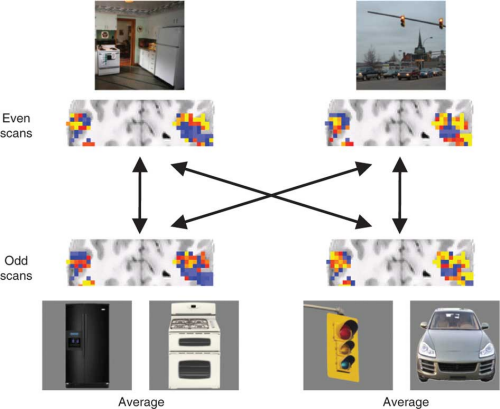Researchers utilize neuroimaging to show how brain uses objects to recognize scenes

Research conducted by Boston College neuroscientist Sean MacEvoy and colleague Russell Epstein of the University of Pennsylvania finds evidence of a new way of considering how the brain processes and recognizes a person's surroundings, according to a paper published in the latest issue of Nature Neuroscience.
For the study, MacEvoy and Epstein used functional magnetic resonance image (fMRI) to help them identify how the brain figures out where it is in the world (scene recognition). Study participants had their brains scanned while they looked at photos of four types of scenes: kitchens, bathrooms, intersections and playgrounds. Separately, the researchers took brain scans while the subjects looked at photos of individual objects particular to those scenes (e.g., refrigerators, bathtubs, cars, and slides).
MacEvoy and Epstein found that they could use the brain patterns produced by objects as keys to decipher the brain patterns produced by scenes, and could "read out" what type of scene a participant was seeing at a given point in time. Neuroscientists typically link the brain area involved, known as the lateral occipital complex, to object recognition.
"While previous research on scene recognition has emphasized the role of the three-dimensional layout of scenes in this process, our results suggest a separate system that utilizes information about the objects in scenes to piece together where we are. While that's a strategy that many of us think we might use, here we have evidence of a brain area that could be responsible for it," explained MacEvoy, an assistant professor in the Boston College Psychology Department and principal investigator of the department's Vision and Cognition Lab, which uses fMRI combined with behavioral methods to understand the neuroscience of visual perception and cognition. "The existence of a second route for scene processing could be helpful in the development of treatment strategies for patients with brain-injuries that impact their ability to recognize where they are, which can be severely debilitating."
More information: www.nature.com/neuro/journal/v … nt/full/nn.2903.html













